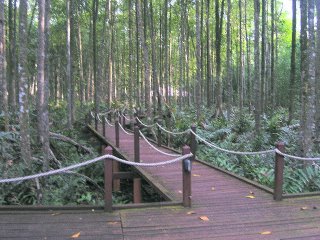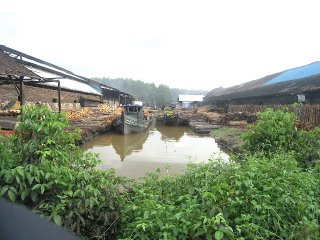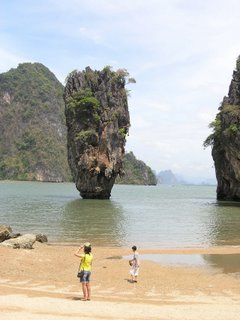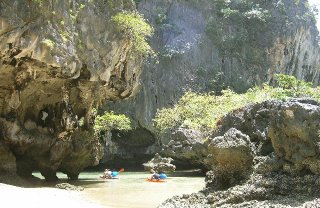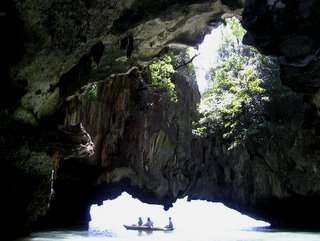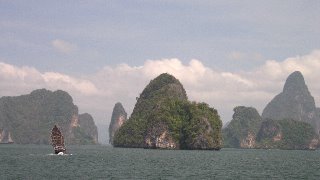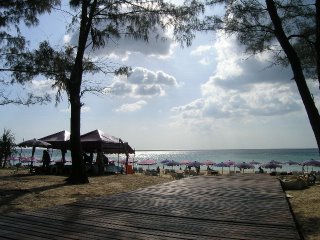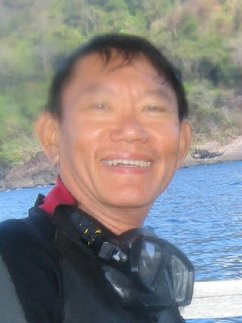Why the moniker "Into the Mirror"?
It has nothing to do with the Korean psychological thriller of the same name nor the book "Into the Mirror: The Life of Master Spy Robert Hanssen" by Lawrence Schiller. I did not watch the movie and has no interest in it at all nor was I even aware of the book by Schiller. I was thinking about what to name my weblog and "Into the Mirror" just popped into my mind. It was only after I have posted two entries to my journal that, out of curiousity, I did a search and found out that my choice of a name was not as unique as I had hoped. Incidentally, the google search also displayed information about how cylindrical mirror lets you see yourself as others see you. Now that is an interesting idea to attribute to the title. The reflection in the mirror, unlike the person before it, has no pretensions, no vanities of youth . Which is more real?
This journal is written to communicate with friends, old and new. It is also about discovering more of myself. Since as a young boy I was smitten by the beauty of nature and felt an affinity with the jungle, mountain, sea and animals. It was time to return to my yearning for travel and adventure while my osteoarthritis was still in the early stages. The choice to retire at the age of 56, after having worked for 36 years as a Medical Laboratory Technologist, 30 of those years in the Institute for Medical Research, was made with delibration. It was fortunate that I married early and my two sons were already working and the house mortgage and all debts fully paid. So with a modest pension I seek to visit as many places as I could afford, with the objective of reconnecting with nature and friends. Most of my excursions were hiking on jungle trails, challenging myself to reach mountain peaks, letting myself bewitched by the wonders of the seas and backpacking to Asian Countries.
Each journey I ventured on, however short, was regarded by me as an adventure in learning. There was so much to marvel at, so much to learn. These mini adventures affected not only the senses but, more significantly, bestowed a spiritual wellness. On a mountain top, looking out as far as the eye could see, my mind absorbed tranquility. Suspending in neutral bouyancy the silence of the underseas sang a melancholic song of the precariousness of life. A breath of air was never so sweet and a mind never so intense as when I surfaced from submergence after being thrown overboard on a white-water rafting trip.
We take so many things for granted such as clean water, fresh air, love from family, friendship, our sources of income and a safe and secured surrounding that when caught in a situation, however temporarily, without these dependencies, how would we react? By taking a journey into lesser known places, walking secluded trails, living with the most basic amenities, I hope to regain a sense of gratitute for all the blessings I have received.
Much of my entries would be mundane, factual rather than lyrical, to provide useful information to those who might be interested to visit the same places with a limited budget. Hopefully, I might be able to attract some comments from a kindred spirit and together we would look "Into the Mirror" and like what we see.
Postscript 24 May 2006
I came across this poem by Ari Fairy from her blog at http://friendfinder.com/blog/3930/post_24047.html
The theme, "in the mirror" has so many facets, and Ari's poem caused me to wonder...
Mirror images, you and I;
Reversal of fortunes,
Can you see the lie?
Harbinger of fate;
That shadow behind me.
The deeds I’ve done for all my life
Choices I’ve made,
some wrong, some right.
Intrinsic pain
Carved over my features;
Years of hiding from the truth.
Destiny’s blame,
Festering blisters of hate;
My soul you ate.
Faces in the mirror
Drifting ‘cross the glass.
Each one holds a memory
Better than the last.
Each a key component
Of the girl I long to be;
The girl whose face resides
In the mirror in front of me.
Can I face the burden
Of the deeds I’ve caused to be?
A silent, staring sentinel
That shadow seems to be.
If covering the glass
Should cause the pain to lift from me,
Does it expiate the traces
Of the true reality?
Can I walk away and know
I’ve been the best that I can be,
Or must I gaze into the mirror
And face eternity?
- Ari fairy
This journal is written to communicate with friends, old and new. It is also about discovering more of myself. Since as a young boy I was smitten by the beauty of nature and felt an affinity with the jungle, mountain, sea and animals. It was time to return to my yearning for travel and adventure while my osteoarthritis was still in the early stages. The choice to retire at the age of 56, after having worked for 36 years as a Medical Laboratory Technologist, 30 of those years in the Institute for Medical Research, was made with delibration. It was fortunate that I married early and my two sons were already working and the house mortgage and all debts fully paid. So with a modest pension I seek to visit as many places as I could afford, with the objective of reconnecting with nature and friends. Most of my excursions were hiking on jungle trails, challenging myself to reach mountain peaks, letting myself bewitched by the wonders of the seas and backpacking to Asian Countries.
Each journey I ventured on, however short, was regarded by me as an adventure in learning. There was so much to marvel at, so much to learn. These mini adventures affected not only the senses but, more significantly, bestowed a spiritual wellness. On a mountain top, looking out as far as the eye could see, my mind absorbed tranquility. Suspending in neutral bouyancy the silence of the underseas sang a melancholic song of the precariousness of life. A breath of air was never so sweet and a mind never so intense as when I surfaced from submergence after being thrown overboard on a white-water rafting trip.
We take so many things for granted such as clean water, fresh air, love from family, friendship, our sources of income and a safe and secured surrounding that when caught in a situation, however temporarily, without these dependencies, how would we react? By taking a journey into lesser known places, walking secluded trails, living with the most basic amenities, I hope to regain a sense of gratitute for all the blessings I have received.
Much of my entries would be mundane, factual rather than lyrical, to provide useful information to those who might be interested to visit the same places with a limited budget. Hopefully, I might be able to attract some comments from a kindred spirit and together we would look "Into the Mirror" and like what we see.
Postscript 24 May 2006
I came across this poem by Ari Fairy from her blog at http://friendfinder.com/blog/3930/post_24047.html
The theme, "in the mirror" has so many facets, and Ari's poem caused me to wonder...
Mirror images, you and I;
Reversal of fortunes,
Can you see the lie?
Harbinger of fate;
That shadow behind me.
The deeds I’ve done for all my life
Choices I’ve made,
some wrong, some right.
Intrinsic pain
Carved over my features;
Years of hiding from the truth.
Destiny’s blame,
Festering blisters of hate;
My soul you ate.
Faces in the mirror
Drifting ‘cross the glass.
Each one holds a memory
Better than the last.
Each a key component
Of the girl I long to be;
The girl whose face resides
In the mirror in front of me.
Can I face the burden
Of the deeds I’ve caused to be?
A silent, staring sentinel
That shadow seems to be.
If covering the glass
Should cause the pain to lift from me,
Does it expiate the traces
Of the true reality?
Can I walk away and know
I’ve been the best that I can be,
Or must I gaze into the mirror
And face eternity?
- Ari fairy



